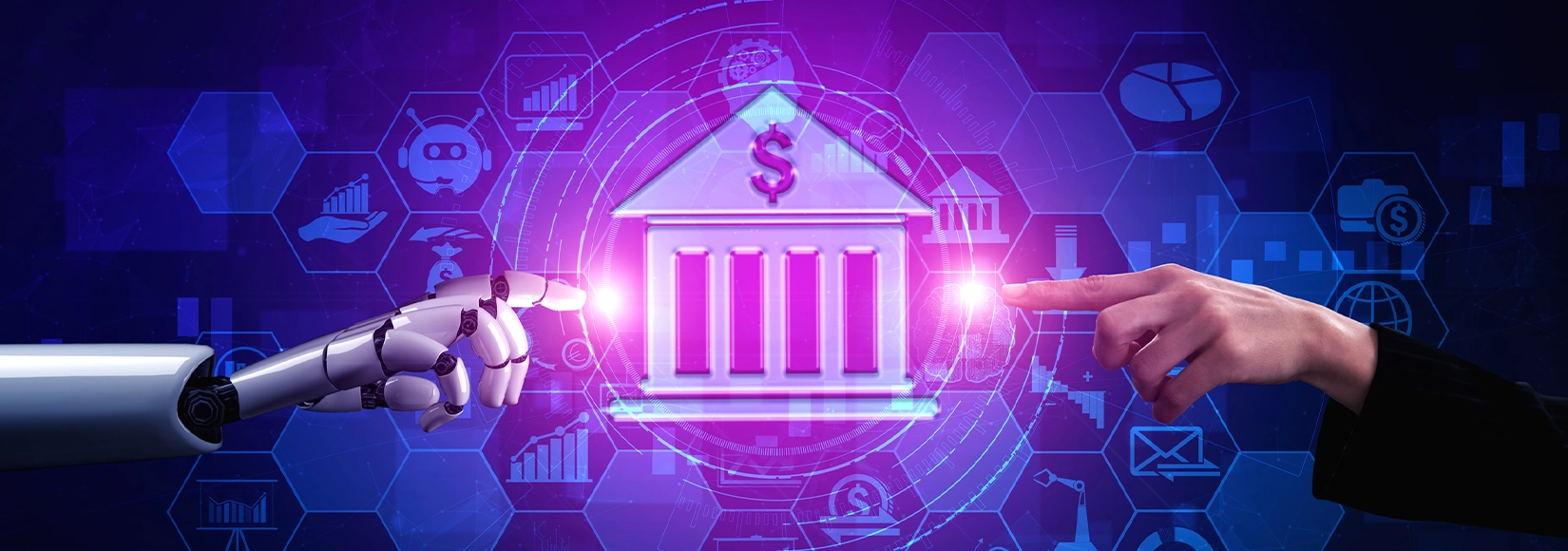In today’s age, where AI is embedded in every industry, AI demand forecasting is a major area where artificial intelligence is taking the lead.
In this blog, we will discuss all about AI demand forecasting, what it is, how artificial intelligence improves demand forecasting, working, benefits, which factors affect the model accuracy, affected industries, and more.
What is AI in Demand Forecasting?
AI in demand forecasting generally refers to the AI-integrated process of predicting the amount of product or service consumers want to buy.
This technique allows the business software to detect the peak and cold seasons according to your business sales data, market trends and suggest the amount of product manufactured and stock management. AI demand forecasting is widely used in many industries now and is significantly seen to increase sales and profits. This directly reduces the potential losses with the help of AI-driven accurate insights.
How Does AI Improve Demand Forecasting?
Being a trending technology, artificial intelligence improves demand forecasting with its advanced functionalities and features. Let us discuss all these features in detail:
Analyzing Large Data Volumes
AI is the God of data analytics. It has the superpower to analyze and recognize patterns in large datasets. Thus, in a fast-paced world where data is generated in huge quantities daily, having AI in business systems can speed up data record management and analytics.
Real-Time Data Processing
Unlike traditional times, it is not possible to manually process large quantities of data produced in real time. The manual process is too time-consuming and is prone to human errors. AI takes the lead in this job and checks all the data processing closely. Moreover, as the new data gets fed into the memory, it automatically adjusts any forecastings based on the same.
Adaptive Learning For Demand Forecasting (Pattern Recognition)
AI models contain machine learning properties that allow the software to learn patterns from historical data patterns and the new data generated. Based on this pattern recognition, AI predicts all the seasonal trends, competitor strategies, and non-obvious correlations. This improves demand forecasting even for volatile markets that undergo shifts often.
Integration Of IoT For Inventory Management
With the help of AI, IoT things can be used to manage inventories, and keep an automated 24/7 check on stock. IoT devices will track the inventory records, monitor product quality, predict their maintenance, and send expiratory alerts to the inventory managers.
Improving Accuracy For Short-Term And Long-Term Forecasting
AI offers business managers the flexibility to check accurate predictions for both short-term and long-term. This helps them make an informed decision about the business to increase profits in the short and long run.
How Does AI Demand Forecasting Work?
To understand the basics of AI demand forecasting, let us look into the workings of an AI model designed to generate demand predictions and insights.
Comprehensive Data Collection
The training model would be fed with historical data and all the data that is generated in real-time.
In-Depth Data Analysis
The AI model will understand the underlying patterns in the data and the new data generated. This will help the model in generating accurate demand forecasts and insights.
Adaptive Continuous Learning
By using embedded machine learning algorithms, AI will dynamically improve its accuracy and forecasts with time, according to all the data that is fed into it.
Insightful Demand Predictions
Based on all the learning and data patterns, the AI model will produce appropriate demand predictions and insights, which will be used to make important business decisions.
Instantaneous Updates
AI forecasting provides real-time adjustments, allowing businesses to respond immediately to market shifts.
Actionable Recommendation
AI will recommend strategies and actions that can improve the business performance based on all the data produced.
Hence, from studying customer behavior to predicting your business performance, AI demand forecasting is a great tool for scaling your business locally and globally.
Industries Where AI Demand Forecasting Is Used
AI demand forecasting is not a future but a widely used transformative technology for businesses in the present. Let us break into the industries where AI demand forecasting has already implemented its transformative effects.
Retail & E-Commerce
AI can store and analyze all the historical data of retail/ e-commerce business sales, products, and customers, based on which it shows valuable insights. For example, for a clothing business, AI can suggest which product of which brand sold the most in the last season, like, 35% of Nike shoes were sold the most for the age group 10-40, and 20% of Asics shoes were sold the most for the age group 60-80. Thus, using such data insights, product managers can think of which brands of different product categories must be kept in high stock to make the most profits.
Supply Chain Optimization
AI can analyze the vast data of customers, their locations, peak sales areas, favorable delivery routes, and more. Thus, whenever any order gets placed, the AI concierge can be leveraged to automatically place the order and assign the best delivery routes using AI demand forecasting, ensuring timely and cost-efficient delivery while minimizing logistical challenges.
Manufacturing
Providing insights on how much product needs to be manufactured based on market demand, season, and competitor analysis is one of the major applications of AI demand forecasting. Not only for generic products, AI can also analyze customer behavior to forecast customized product demands as well. Moreover, demand forecasting, along with dynamic pricing, becomes a full-house combo for manufacturing, marketing, and retail businesses.
Automotive
For the automotive industry, AI demand forecasting can create strategic plans for picking orders and finishing deliveries through fast and efficient routes. AI studies all the customer data, order data, and locations of both, predicts expected delivery dates, schedules the fastest delivery routes, does quantitative analysis of sales and orders, and more.
Healthcare
AI demand forecasting in healthcare helps meet the doctor-to-patient ratio, reduces long waiting lines, and increases the availability of medicines and health services. AI models learn patterns from patient data, faculty data, disease outbreaks, seasonal trends, and medication stock analysis and thus help provide appropriate distribution of hospital beds, staff, medical equipments, vaccines, and more. AI can also analyze human behavior to provide personalized schedules to both patients and customers.
Travel & Hospitality
The travel and hospitality industry is highly affected by seasonal trends. AI demand forecasting for the traveling industry can thus be very useful in adjusting the prices of hotels and services. With AI demand forecasting in the systems, operation and marketing managers can help make efficient seasonal plans to manage bookings, enhance customer experience, and increase sales.
AI-Based Dynamic Pricing. How does it enhance the benefits of Demand Forecasting?
Another feature that walks hand in hand with AI demand forecasting and helps businesses make the most of their investments is AI Dynamic Pricing. This feature is widely used by retail and e-commerce businesses present globally to increase their sales and attract more customers.
What is AI-Based Dynamic Pricing?
AI dynamic pricing is the groundbreaking ability of AI to adjust prices according to product demand, market competition, and more. This feature of artificial intelligence tends to play with customer’s psyche, pushing them to buy a product or service due to FOMO, personalization, anchored pricing points (mentions like $100 earlier, now $80), bundling discounts, time-sensitive discounts, and more.
Example of AI-Based Dynamic Pricing
For example, imagine a customer who is interested in buying a specific handbag she keeps revisiting multiple websites to check its price and availability. AI-driven dynamic pricing detects her repeated interest and considers factors like inventory levels, the handbag’s popularity, and competing prices. Since she’s viewed it multiple times, the system might offer her a slight discount or notify her of a “limited-time offer” to encourage a quicker purchase. If the stock starts to run low, AI could even raise the price slightly to signal scarcity, making the customer feel she should buy it now before it’s gone. This use of dynamic pricing adapts to her behavior in real time, helping the retailer maximize both customer satisfaction and profits.
By continuously analyzing factors such as inventory levels, customer behavior, seasonal trends, and competitor pricing, AI dynamic pricing enables businesses to maximize profits while staying competitive and responsive to shifting market dynamics.
Benefits Of Implementing AI Demand Forecasting Solutions
The integration of AI in demand forecasting is a dynamic step taken forward to revolutionize the operations of businesses across diverse industries. Here are some of the benefits it offers:
Enhanced Data Processing Efficiency
AI can process large amounts of data in a fraction of a second. This removes all the manual work and human errors from the analysis tasks. Thus, all types of analysis and predictions become more accurate with AI calculations, allowing the company to do more efficient demand planning and enhancing operations.
Accurate, Adaptive Forecasts
With AI demand forecasting, data-backed predictions are not only accurate but adaptive. This means that with each recently added data, AI forecasting and insights adjust in real-time. Thus, the accuracy of the predictions remains intact through the market shifts.
Holistic Data Integration
Another benefit of AI-based demand forecasting is that while generating any forecasts, AI can integrate both internal and external data, both historical and present. This helps identify relationships between different factors like market trends, economic data, seasons, etc.
Rapid Responsiveness
As said above, AI algorithms adapt to the market changes very quickly. This rapid responsiveness helps the business systems interact with the online audience in real-time, which attracts more customers and directly increases sales.
Improved Forecasts Over Time
With real-time integration and adaptive nature due to ML algorithms, AI models can improve their forecasting over time. Hence, as new data is generated and new forecasting is produced, the model will improve with every use.
Increased Profits For Business
With demand forecasting backed informed decisions and features like dynamic pricing, the AI demand forecasting model tends to better the inside operations of the business, which directly improves the business profits by increasing sales.
Thus, with all these great benefits to businesses, AI demand forecasting models yield a high return on investment.
What Factors Affect The Accuracy Of AI Demand Forecasting?
Up next, let us discuss the factors that influence the accuracy of the demand forecasting AI model:
Data Quality
The size and quality of training datasets build the base for AI models. The larger the size and the better the quality, the more accurate the AI model will be. Therefore, while training the AI model, it must be ensured that it is trained with a large, high-quality data set with less or no bias, missing values, and manual errors.
Dependency on Historical Data
Feeding historical data into your AI model is a required step to let the AI model understand existing patterns. However, your AI model must not completely depend on that data simply because it will limit its adaptive power, and hence, it will not be able to generate adaptive and better forecasts over time.
Real-Time Data Integration
It is almost mandatory for the AI model to have real-time integration capabilities so that it can adjust the forecasts or dynamic prices in real time. This improves the accuracy of forecasts and also allows the model to produce improved predictions over time.
Model Complexity
The model must be balanced. It should neither be too complex nor too simple but a balance between the both. The reason is that simple models may not be able to produce dynamic results, and complex models may lead to overfitting and poor performance.
Conclusion
AI demand forecasting is transforming how businesses predict and respond to market trends. By leveraging advanced data analysis, adaptive learning, and real-time updates, companies can make precise, informed decisions that drive efficiency and profitability. From optimizing supply chains to enhancing customer satisfaction through better inventory management, AI-driven forecasting equips businesses with a competitive edge in today’s fast-paced market. Embracing AI demand forecasting isn’t just a smart investment—it’s essential for staying agile and meeting evolving customer needs.
If you want to develop a cutting-edge AI demand forecasting model to fit your business needs perfectly, contact Build Future AI immediately and pave your journey to growth!




